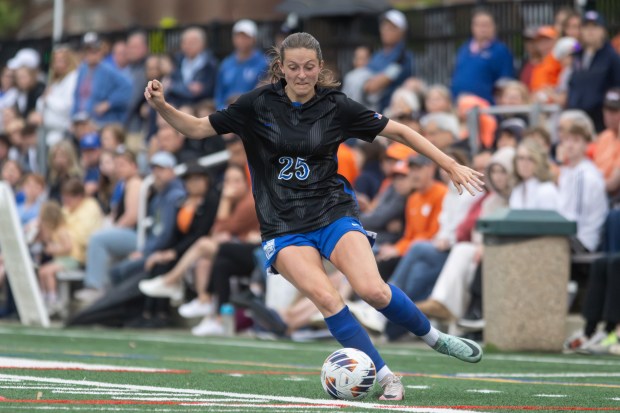Garden apartments, attic-to-housing conversions and coach houses could soon become easier to build across Chicago.
The city is weighing the results of a test effort to re-legalize additional dwelling units with an eye on passing far-reaching legislation as soon as next month. The three-year pilot program launched by the City Council in 2021 led to “gentle increase in density” and saw “consistent, but not overwhelming demand,” Department of Housing officials said during a council hearing Tuesday.
The findings show a broader rollout of the relaxed rules could spur naturally occurring affordable rental units while giving homeowners a new source of income, they argued.
“We don’t see (additional dwelling units) as a panacea to our housing shortage, but we do see it as a critical part of the mix,” said Matthew Stern, the Department of Housing’s interim policy director.
The pilot tested the policy in five areas scattered across Chicago. During its run, the city issued permits for the construction of 250 additional dwelling units. Nearly all permits involved North or Northwest Side buildings with two to six units.
“It gives you options,” said Ald. Bennett Lawson, 44th, the interim zoning chair. “It provides units. We are in a housing crisis in our city. We have to build units of all types. Big, small, affordable. Basements, coach houses. This is not going to solve all our problems, but we have to use all the tools.”
The proposal did not face a vote Tuesday. Lawson plans to put his ordinance up for a committee vote later this month with hopes of a final full-council vote in July and said he is confident he has a majority.
While the broad aim of the legislation — legalizing additional dwelling units throughout many residential areas — is set to remain, requirements on where and how such units can be built could change in coming weeks, Lawson said.
The North Side alderman’s current substitute ordinance already includes one major break from the pilot: It would allow building owners to add both a coach house and a conversion unit, as opposed to one or the other. It also would allow for ADUs across more zoning designations, but would require special permitting in some areas zoned for detached single-family homes.
A proposal made by Mayor Brandon Johnson’s administration in April as a part of his “Cut the Tape” initiative would not require such special permitting, instead allowing additional dwelling unit permits by right in more areas.
Changes in zoning and parking requirements caused the construction of additional dwelling units to be banned in Chicago in 1957.
Relaxed additional dwelling unit restrictions could bring a host of benefits to Chicago, Stern said. The units add housing without changing neighborhoods and produce affordable housing without subsidies, he said. They also add an opportunity for intergenerational living and help preserve critical but threatened two-to-six-unit buildings, he said.
Stern added that the proposed change could also help bring potentially thousands of illegally constructed additional dwelling units in Chicago up to code, a view Lawson echoed.
“We have units all across the city in basements and attics that were built to code or close to code that may or may not be legal,” Lawson said. “I think it’s an opportunity for everybody to look at density in a positive way, look at adding stability for families that need multigenerational living and to help pay our taxes.”
Most aldermen appeared supportive of the proposal Tuesday, but several took note of the sharp skew in where additional dwelling units were permitted during the pilot. Just 10 of the 215 permits issued went to buildings in the South, Southeast and West Side pilot zones. The rest went to North and Northwest Side buildings. Ald. Pat Dowell, 4th, and Ald. Byron Sigcho Lopez, 25th, called for subsidy programs to help homeowners considering the expansions, in an effort to spur development in other parts of the city.




